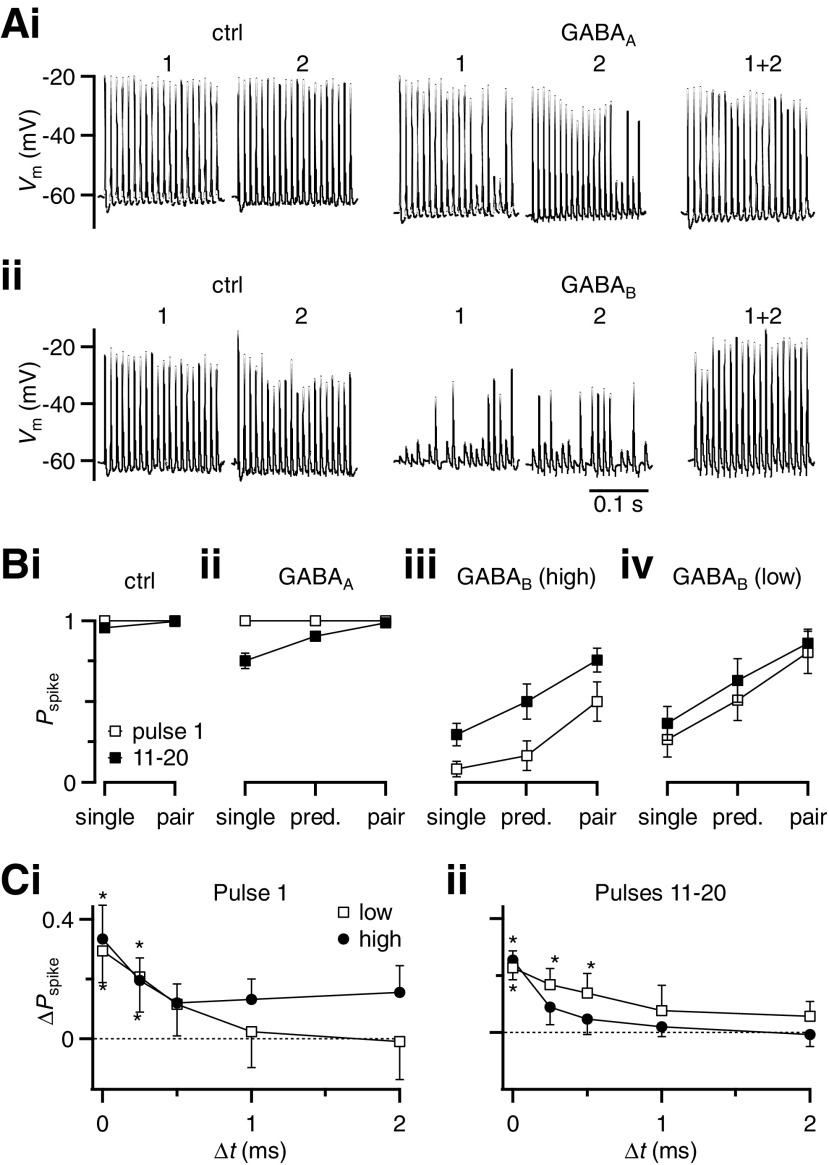Fig. 8.
The effects of GABA on coincidence detection are primarily mediated through GABABRs. A: representative traces showing the effects of GABAAR (i) and GABABR (ii) activation on single and paired stimulation in 100-Hz trains. Responses to each individual input in control conditions are shown in the 2 left traces. The next 2 traces show reduced spiking during GABAR activation. The rightmost trace shows that spiking is restored when both inputs are stimulated during GABAR activation. GABAAR activation (i) was done by puffing 1 mM GABA in the presence of CGP55845. GABABR activation (ii) was done by bath application of baclofen. B: average effects of GABAAR (ii) and GABABR (iii, iv) activation for single and paired stimulation on the probability of BC spiking. GABAAR activation (ii) was done by puffing 1 mM GABA in the presence of CGP55845 (6 cells). GABABR activation was done by bath application either of baclofen (iii, “high”; n = 11 cells) or of 10 μM GABA in the presence of bicuculline (iv, “low”; n = 5 cells). Pspike increased significantly from single to paired stimulation under all conditions of GABAR activation (P < 0.02), but not in control. The effects of GABAAR activation are weaker than GABABR activation. C: enhancement of BC spike probability (ΔPspike), for 2 inputs stimulated at different time intervals during GABABR activation. GABABRs were activated using bath application of baclofen (closed circles, “high,” 6 to 11 cells for each point) or 10 μM GABA in the presence of bicuculline (open squares, “low,” 5 cells). ΔPspike is calculated relative to the value predicted for spike summation. Asterisks indicate values significantly different from 0.

